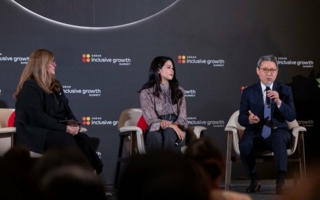14/03/2016
ESCP Europe: Do we actually observe a trend towards backshoring in the fashion industry?
After being a model for offshoring, the fashion industry is deploying “multi-shoring” over backshoring to ensure its innovative capacity.
After a long and strong wave of offshoring in the fashion industry in low cost countries such as China, limits to that model have emerged: hidden costs in logistics, in quality and in coordination; counterfeiting; a negative impact on the environment; poor working conditions; and an inability to address the acceleration of fashion trend changes. A study by the Boston Consulting Group predicts a wave of backshoring to the United States following a reduction in the gap between manufacturing costs in China and in the United States.
This results from a parallel increase in Chinese labour costs and in productivity in the US, combined with a decrease of energy costs in the United States.Additionally, China, previously the ”factory of the world”, particularly in fashion, is increasingly manufacturing for its own market (75% of clothing manufactured in China was exported ten years ago; today, 75% of its manufacturing is for its own market). This finding has strong implications for European and US fashion firms. The available manufacturing capacity of Chinese firms for European and US firms is shrinking, and there is no other manufacturing power such as China. Firms are now utilizing Vietnam, Bangladesh and Ethiopia; however, none of these countries have the potential to absorb the manufacturing capacity of China. A recent study by McKinsey shows that 72% of firms plan to move some of their sourcing outside of China and that 70% would like to move manufacturing closer to their market in “proximity sourcing”; in addition, at the same time, 52% expect to grow Bangladesh in the next five years.
More recently, offshoring has been perceived as challenging for the innovation capacity of firms in fashion, where product innovation is closely linked to the manufacturing process. Consequently, design cannot be separated from manufacturing. Therefore, it is recommended to co-locate the two activities, which for some means to backshore manufacturing in the country of origin. Therefore, innovation is an additional argument in favour of backshoring. This may be the reason why Adidas and Burberry will open in 2016 highly modern factories respectively in Germany and in the United Kingdom.
Based on these different arguments, do we actually observe a trend towards backshoring in the fashion industry? An in-depth analysis of 20 European fashion companies shows a more complex picture.
First, we have observed no massive trend towards reshoring but it is developing (the share of close manufacturing locations is increasing slightly). Also, all firms manage a portfolio of manufacturing locations (close and far).
Although the need to coordinate design and manufacturing is confirmed, firms use a variety of strategies beyond backshoring manufacturing next to design. First, numerous firms have been able to successfully coordinate design and manufacturing over distance by using manufacturing and communication technologies (such as PLM and 3D design) and the organization of regular and systematic trips of designers to manufacturing plants.
Then, some firms choose a “reverse colocation”, in which firms move design next to manufacturing (rather than the alternative); some large players in the European fashion industry have moved their design department (part or all) to Hong Kong or China.
Another coordination mechanism between design and manufacturing is to locate prototyping and product development (an early and key step of manufacturing), which is considered critical for the innovation process, close to design, and the remainder of the manufacturing phases can be located far.
Finally, analysis shows a more subtle approach of what distance is, beyond its geographical dimension. The cultural, political, and economic dimensions of distance matter much to the quality of coordination and innovation. For instance, some French firms have decided to manufacture in Morocco, which is not necessarily the closest from a geographical perspective but close from a cultural and political perspective (former colony and shared language), which facilitates coordination and reduces the effects of geographical distance. Additionally, it was found that institutional proximity (own plants) facilitates coordination in the geographical distance. This suggests that distance also has an institutional dimension.
In conclusion, the fashion industry shows that the need for co-location between design and manufacturing can be managed in different ways and that rather than offshoring or backshoring, European fashion firms ultimately engage in “multishoring”, a complex portfolio of multiple locations (combining close and far) and multiple institutional formats (own plants, partnership and sourcing) according to products and their degree of innovation.
Céline Abecassis-Moedas, Valérie Moatti
The both authors are co-directors of the ESCP Europe Lectra Chair "Fashion and Technology" (a partnership between ESCP Europe and Lectra to study and promote the role of technology and innovation in Fashion).



